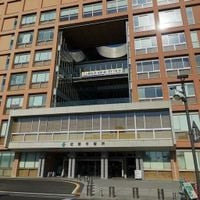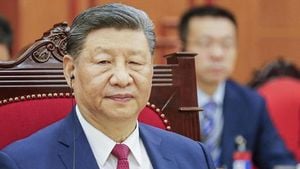On April 13, 2025, Sano City in Tochigi Prefecture witnessed a significant political event as the mayoral election and city council election kicked off early in the morning. Voting began at 7:00 AM at 55 designated polling locations throughout the city. By 3:00 PM, the voter turnout was reported at 22.32%, a figure that raised eyebrows given the critical nature of the elections.
The incumbent mayor, Mr. Yutaka Kaneko, successfully retained his position, garnering a total of 17,064 votes. His closest rival, Ms. Katsuko Hayakawa, trailed behind with 16,557 votes, a difference of just 507 votes that ultimately led Hayakawa to announce her retirement from politics after the election.
The elections were not just about the mayor; they also included a city council race where 24 new council members were elected. The city council election recorded a higher voter turnout of 48.99%, indicating a more engaged electorate in that aspect of local governance.
As the day progressed, voting was set to conclude at 7:00 PM, although some areas closed at 6:00 PM. Following the end of voting, ballot counting was scheduled to begin at 8:15 PM at the Hana-Hana Pharmacy gymnasium in Akamicho. It was anticipated that the general trend of the election results would be determined around 11:00 PM.
Despite the incumbent’s victory, the low voter turnout in the mayoral election raised concerns about public interest and engagement in local politics. This election marked a significant moment in Sano City’s political landscape, as it was the first time the voter turnout dipped below 50% in a mayoral election.
The election campaign had been characterized by intense competition among five candidates, with Kaneko’s leadership being challenged on various fronts. The public discourse leading up to the election focused heavily on issues such as economic development, disaster preparedness, and community engagement. Voters expressed both interest and confusion regarding the candidates' platforms, reflecting a community grappling with the implications of their choices.
Mr. Kaneko, who has served as mayor previously, faced criticism and scrutiny during his campaign but managed to rally enough support to secure another term. His campaign emphasized continuity and stability, which resonated with voters looking for a steady hand in local governance.
Meanwhile, Hayakawa’s close defeat and subsequent retirement signal a shift in the political dynamics of Sano City. Her candidacy had attracted considerable attention, and her loss reflects not only the challenges of competing against an incumbent but also the evolving preferences of the electorate.
The newly elected city council members will face the task of addressing the pressing issues that the community has raised. With a mix of fresh faces and experienced politicians, the council's composition could lead to new strategies in tackling the city's challenges.
As the results were finalized, the political landscape in Sano City appeared to be at a crossroads. The low turnout could indicate a need for future initiatives to engage citizens more effectively in the democratic process. Local leaders and community groups may need to reassess their approaches to voter mobilization, ensuring that residents feel their voices matter in shaping the future of their city.
Overall, the April 13 elections in Sano City not only confirmed the incumbent mayor's position but also highlighted significant trends in voter engagement and political sentiment. As the city moves forward, the implications of this election will undoubtedly shape the dialogue around local governance and community involvement.







